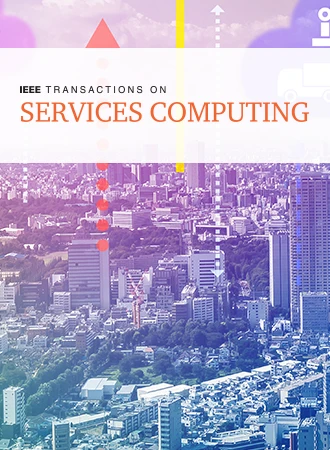Next PoI Recommendation Based on Graph Convolutional Networks and Multiple Context-Awareness
IF 5.8
2区 计算机科学
Q1 COMPUTER SCIENCE, INFORMATION SYSTEMS
引用次数: 0
Abstract
Next Point-of-interest recommendation involves modeling user interactions with Point-of-interests (PoIs) to analyze user behavior patterns and suggest future scenarios. Data sparsity problems in PoI recommendations can significantly impact the performance of the recommendation model. This paper introduces the Graph Convolutional Network and Multiple Context-Aware PoI Recommendation model (GMCA). First, we present a weighted graph convolutional network that aims to capture the optimal representations of users and PoIs within the user-PoI interaction graph. Second, we employ a fine-grained approach to analyze user check-in records and cluster them into multiple user activity centers. Furthermore, we incorporate time, location, and social context information into the matrix decomposition process. Third, User activity centers are constructed by clustering user check-in records, and the geographical influence of PoI location on user behavioral patterns is explored using probabilistic factor decomposition. The evaluation of the GMCA model on the Yelp and Gowalla datasets shows a significant improvement in Precision@10 indicators. Specifically, there is a 13.85% increase in Precision@10 on the Yelp dataset and a 9.01% increase on the Gowalla dataset. The effectiveness of the GMCA model has been confirmed through numerous experiments conducted on two public datasets.基于图卷积网络和多上下文感知的Next PoI推荐
下一个兴趣点推荐涉及对用户与兴趣点(PoIs)之间的互动进行建模,以分析用户行为模式并提出未来场景建议。兴趣点推荐中的数据稀疏问题会严重影响推荐模型的性能。本文介绍了图卷积网络和多重情境感知 PoI 推荐模型(GMCA)。首先,我们提出了一种加权图卷积网络,旨在捕捉用户与 PoI 交互图中用户和 PoI 的最佳表征。其次,我们采用细粒度方法分析用户签到记录,并将其聚类为多个用户活动中心。此外,我们还将时间、地点和社会背景信息纳入矩阵分解过程。第三,通过聚类用户签到记录构建用户活动中心,并利用概率因子分解法探索 PoI 位置对用户行为模式的地理影响。在 Yelp 和 Gowalla 数据集上对 GMCA 模型的评估表明,Precision@10 指标有了显著提高。具体来说,Yelp 数据集上的 Precision@10 提高了 13.85%,Gowalla 数据集上的 Precision@10 提高了 9.01%。在两个公共数据集上进行的大量实验证实了 GMCA 模型的有效性。
本文章由计算机程序翻译,如有差异,请以英文原文为准。
求助全文
约1分钟内获得全文
求助全文
来源期刊

IEEE Transactions on Services Computing
COMPUTER SCIENCE, INFORMATION SYSTEMS-COMPUTER SCIENCE, SOFTWARE ENGINEERING
CiteScore
11.50
自引率
6.20%
发文量
278
审稿时长
>12 weeks
期刊介绍:
IEEE Transactions on Services Computing encompasses the computing and software aspects of the science and technology of services innovation research and development. It places emphasis on algorithmic, mathematical, statistical, and computational methods central to services computing. Topics covered include Service Oriented Architecture, Web Services, Business Process Integration, Solution Performance Management, and Services Operations and Management. The transactions address mathematical foundations, security, privacy, agreement, contract, discovery, negotiation, collaboration, and quality of service for web services. It also covers areas like composite web service creation, business and scientific applications, standards, utility models, business process modeling, integration, collaboration, and more in the realm of Services Computing.
 求助内容:
求助内容: 应助结果提醒方式:
应助结果提醒方式:


